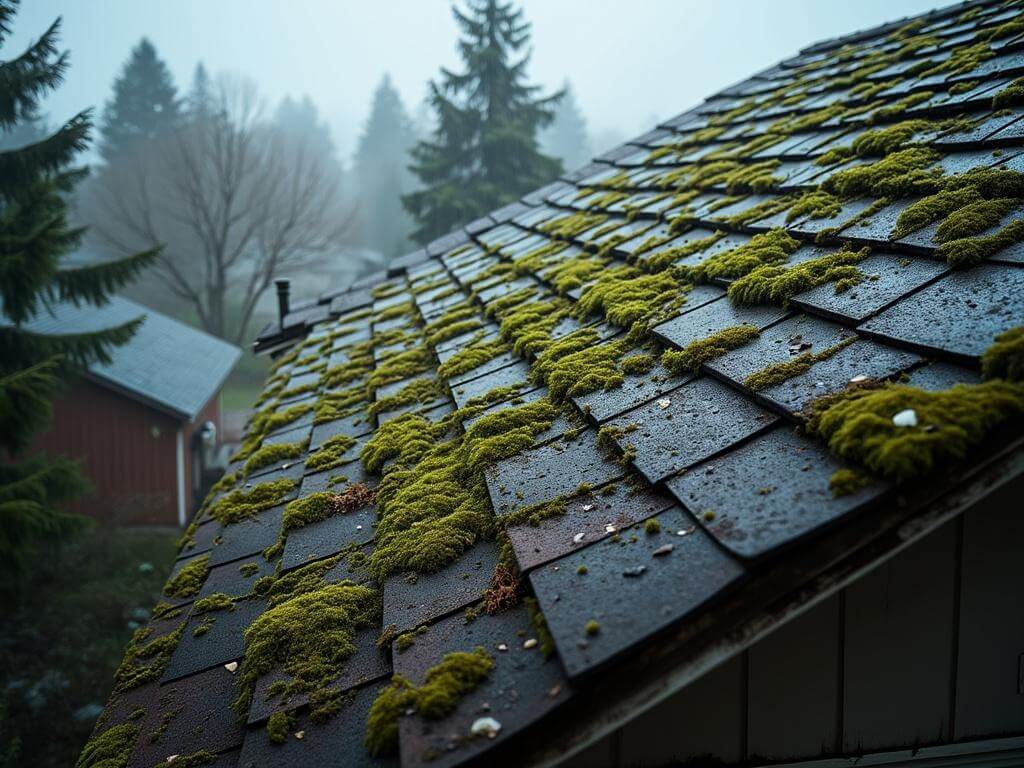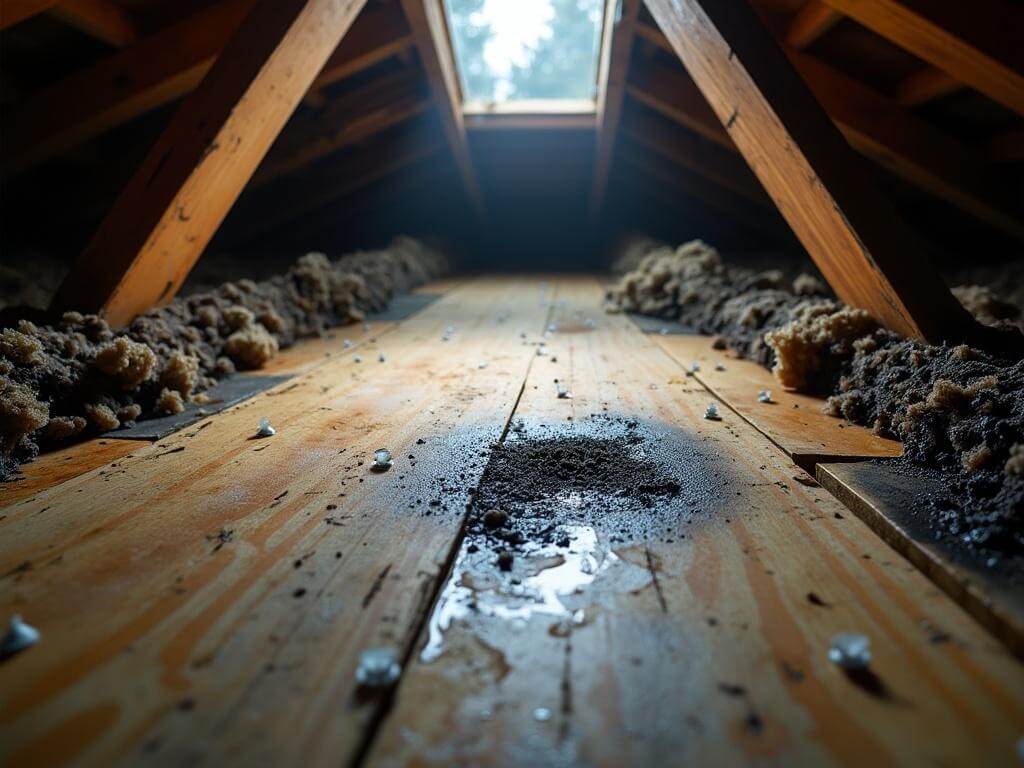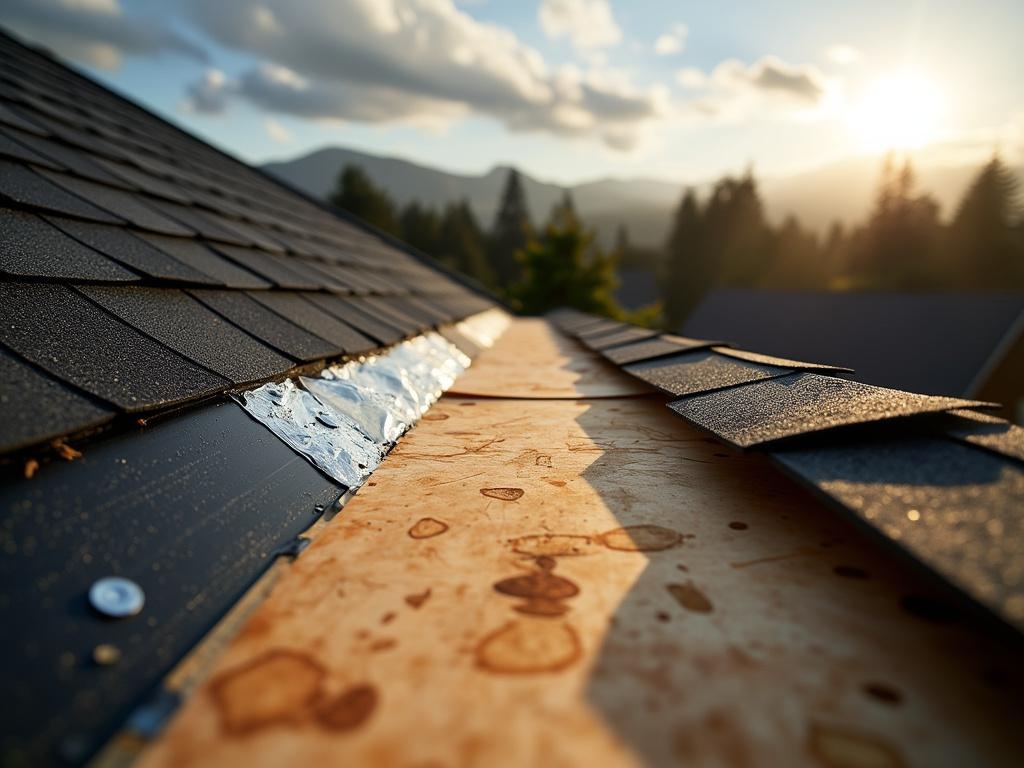August 15, 2025

Roof replacement is one of those things that sneaks up on homeowners—everything seems fine until one rainy Corvallis winter reveals that your “slightly leaky” ceiling now includes a bucket brigade.
Let's talk about roof replacement in Corvallis, OR. Whether you're dealing with weather-worn wood shakes or aging asphalt shingles, ignoring the problem can cost you more than just a weekend project. From moldy attic insulation to structural rot, the real damage hides underneath.
Here’s how to spot trouble, what affects your roof's lifespan in Oregon specifically, and what you absolutely cannot ignore if you're thinking about a full replacement.

Most folks don’t jump at the idea of replacing a roof. But sticking to minor patches every year is like playing leak roulette. Eventually, your luck runs out.
You’ve probably asked yourself:
Here’s the short answer—if your roof’s over its expected lifespan, has widespread moss, leaks, or requires frequent repairs, it’s likely time to move on.
In Corvallis especially, constant exposure to rain, humidity, and storm debris means roofing materials wear out faster than you’d expect. And moss? It’s not just cosmetic. It acts like a sponge, soaking in moisture and trapping it against the shingles. Over time, that moisture works its way into the decking, insulation, and walls.
Keep in mind, a roof replacement isn’t just about damage. It’s about adding protection, energy efficiency, and peace of mind for 20+ years ahead.
Quick takeaway: If you’re repairing more than once every few years or seeing signs indoors, stop patching. Start planning.
Not all roofs are created equal—especially when they’re in the Willamette Valley.
Living in Corvallis means dealing with:
That’s not just wear and tear—it’s roof abuse.
I remember a client in Southtown whose roof looked fine from the street. But after the third ceiling stain in six months, we tore off the first few shingles. Underneath, the decking near the eaves was waterlogged, and black mold had begun creeping across the insulation. All hidden from view.

What made the problem worse? No roof vents. That lack of airflow meant trapped moisture had years to cause damage.
Moral of the story: in Oregon, proper ventilation and regular inspections aren’t optional. They’re your first line of defense.
Quick takeaway: Roofs in our area take a beating. Routine inspection and moss removal aren't "extras"—they extend roof life, big time.
"How long does a roof last?" is the most common question I get from both homeowners and commercial property managers. The answer? It depends. Especially on the materials and how well you maintain them.
Here’s a quick breakdown for Oregon weather:
Want your shingles to hit the upper end of their lifespan?
You’d be amazed how often a "30-year" roof barely clears 18 years because of clogged vents or never-cleaned moss buildup.
True story: One homeowner in northeast Corvallis had the same asphalt roof for 23 years—looked almost new when we inspected it. They’d cleaned the moss twice a year, added attic fans to boost airflow, and never ignored a leak. That roof easily outlasted their neighbors by nearly a decade.
Quick takeaway: Material matters—but care and installation quality often matter more.
So how do you know it’s really time to call in the pros and start fresh?
Look for these key signs your roof is done:
Also, check your calendar. If your roof is 20+ years old? You’re definitely in the zone.
One thing most folks skip? Walking the attic.
Check the insulation. Is it wet? Any dark streaks across the plywood? Do you see nails dripping condensation? That’s moisture build-up from poor ventilation—a hidden enemy that shortens roof life quietly over years.
Quick takeaway: If you see leaks or moss—or your roof’s getting old—schedule an inspection. Not tomorrow. Today.
If you’ve figured out a replacement is in your future, don’t rush into it eyes closed.
Here’s what you NEED to check off first:
Someone with experience should be on your roof and in your attic. They’ll look past surface damage and check for hidden rot or structural issues.
In Corvallis, roof replacements don’t legally require a permit if you have a single family home or duplex. Triplex or larger residential and commercial properties do require a permit. It protects you during inspections and resale. No permit = potential fines or having to redo work. Don’t chance it.
Don’t just go with what your neighbor used five years ago. Consider:
Tip: Architectural shingles are a great upgrade here in town—stronger, more moss-resistant, and still cost-effective.
A new roof with poor airflow still collects moisture and heat. This kills roof decking and trashes your attic insulation within a few seasons. Make sure soffit vents, ridge vents, and attic airflow are handled during replacement.
Licensed. Insured. Local. Experienced with Oregon-specific roofing codes. And one who gives a clear warranty.
I’ve seen too many “bargain” replacements done with poor flashing, reused vents, or thin underlayment. Just because it passes inspection doesn’t mean it’ll survive five winters.
Quick takeaway: The replacement process starts before shingles get touched. Good planning and smart choices make your new roof last decades—not just years.
Up next: we’ll break down what happens during the replacement process, how long it really takes, what Corvallis inspections involve, and real-world maintenance tips that double your roof’s lifespan.
Here’s what surprises folks the most: the actual tear-off and installation doesn’t take that long — usually 1 to 3 days for a standard residential roof in Corvallis.
Seriously.
If you’ve done your homework and prepped properly, the rest flows like clockwork.
Here’s what the process looks like once you’ve signed the contract and secured your permit:
Your old roof gets stripped down to the decking. That’s when we can really assess any hidden issues like rot or water damage.

This is where surprises pop up. We’ll replace any soft or compromised plywood so your new roof has a strong, dry foundation.
Before shingles go on, we layer a water-resistant underlayment and replace or install flashing at chimneys, valleys, and roof edges.
Shingles, shakes, Metal — whatever you choose gets installed with precision. Exhaust and intake vents are upgraded based on your attic airflow needs.
Nails, debris, stray materials — all gone. Then the city or our licensed roofing contractor completes a final inspection to close your permit and verify code compliance.
Pro tip: You don’t need to leave your house unless we’re also working inside (like decking replacement near vaulted ceilings). But a day or two of hammering is normal — don’t plan any Zoom calls.
Quick takeaway: Roof replacement isn’t a drawn-out ordeal. With a solid plan and the right crew, it’s fast, efficient, and transformative.
Learn more about the importance of permits for your project in our guide: Understanding Roof Replacement Permits in Corvallis.Most people breathe a sigh of relief once the last shingle’s nailed in... but that’s not the end.
Keeping that new system in great shape takes just a little effort each year—and it pays off big.

Story time: One homeowner near the OSU campus ignored moss buildup for three years. From the ground, it looked harmless. But when we stepped up for a spring inspection? The granules had worn off entirely under portions of the moss, and the roof was leaking through nail holes. Replacing a few shingles turned into a partial tear-off. An hour of moss removal a couple years earlier could’ve prevented it.
Quick takeaway: Maintenance is the silent partner in your roof’s long-term success. Give it an afternoon once or twice a year — and it just might save you ten grand.
Let’s be real — no one wants to shell out money upfront for a new roof.
But waiting too long? It’s expensive in all the wrong ways.
Here’s what happens when roof issues are delayed:
And get this: According to a 2023 Remodeling Cost vs. Value Report, homeowners in the Pacific Northwest recouped around 61% of a new roof’s cost in resale value — higher than most home upgrades.
So it’s not just a repair. It’s a long-term investment in your equity, safety, and peace of mind.
Quick takeaway: Delaying a roof replacement doesn’t save money. It defers it — and multiplies it.
I had a client off Circle Blvd whose roof sprung a leak during a windstorm in November. They had patched it three times over the past year.
After we inspected it, we found wet insulation, rotted roof decking, and mold starting to show at the rafters.
We helped them file the permit, plan ventilation, and select architectural shingles with better storm resistance and a top-tier underlayment system for added moisture protection.
The total job was finished in just two days.
Six months later, they sold the house for full asking — largely thanks to a clean inspection report and the transferable roof warranty.
Another Corvallis customer in the Timberhill area had us inspect a cedar shake roof just hitting 30 years. They were sold on patching “a few problem areas,” but when we pulled back some sections, 30% of the underdecking was water-damaged from slow leaks.
They bit the bullet, switched to a moisture-resistant metal, and haven’t had moisture problems since — plus they shaved four figures off their homeowner insurance thanks to the fire rating.
Quick takeaway: Homeowners who act proactively usually spend less than those who wait for damage to “prove it’s time.”
Maybe, if we're talking one or two shingles after a windstorm. But if leaks keep coming back, or your roof’s more than 20 years old? Replacement is more cost-effective in the long run.
Technically, yes. Trust us you don’t really want to. Every year we bail out owners who tried to self install. It's hard work. .
Likely. Modern energy code may require better insulation or added ventilation when the roof is replaced. A quality contractor will identify those upgrades during inspection.
Once scheduled, most homes are done within 2–3 days of starting work. Permitting and prep can take longer depending on season and material availability.
A city inspector verifies the roof matches the permit and meets code: underlayment, flashing, ventilation, etc. Once approved, your paperwork is complete for resale and insurance.
Quick takeaway: Ask questions up front. It’s your roof—and your biggest investment.
Want a roof that protects your home and pays you back?
Look ahead to these trends:
If you’re replacing a roof today, you’re not just picking defense against rain. You’re investing in performance, protection — and potentially a higher resale price.
In the next few years, expect smarter roofs to become the standard, not the upgrade.
In Corvallis, a quiet roof isn’t necessarily a healthy roof.
Leaks don’t announce themselves until the drywall buckles or stains creep across the ceiling.
That’s why proactive inspection, smart material choices, proper permitting, and expert installation matter — every single time.
We’ve worked with hundreds of homeowners across Linn and Benton Counties, and every story ends the same way:
“No regrets—wish we’d done it sooner.”
If you’re unsure about what’s going on overhead, schedule a comprehensive inspection. We’ll walk you through the roof’s condition, answer every question, and never pressure you.
Just straight answers, built on years of local experience.
Your peace of mind begins up top — with the right roof replacement in Corvallis, OR.